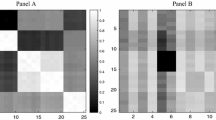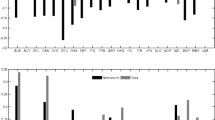Abstract
We extend proxies of several popular asset allocation approaches—U.S. and Global 60/40, Diversified Multi-Asset, Risk Parity, Endowment, Factor-Based, and Dynamic asset allocation—using long-run return data for a variety of sub-asset classes and factors to test their long-term performance. We use equity and debt assets, commodities, alternatives, and indices to reconstruct the returns on allocation portfolios from 1926 to the present, the entire period for which comprehensive asset pricing data are available. We contribute to the existing literature by developing a laboratory for testing the performance of popular asset allocation strategies in a wide range of scenarios. We also aim to test the importance of the behavioral aspect of investment decisions for portfolio outcomes. In our framework, Factor-Based portfolios exhibit the best traditionally measured risk-adjusted returns over the long run. However, Dynamic asset allocation is most likely to reduce the risk of abandonment of the strategy by an investor and selling the portfolio in panic when they experience losses over their tolerance threshold, because the dynamic strategy exhibits lower expected drawdowns, even during severe market downturns. Across all strategies, risk-tolerant investors who rely on a longer history to set their expectations, whether based upon actual or extrapolated data, experience significantly better outcomes, particularly if their investment horizon includes times of crisis. This study informs portfolio managers, investment analysts, and advisors, as well as investors themselves, of the impact of information, persistence, and properties of various portfolio allocation methods on investment returns.



Similar content being viewed by others
Notes
The Online Appendix can be found at https://nonnasorokinaphd.org/century-crash-risk.
References
Asness, Clifford S., Tobias J. Moskowitz, and Lasse Heje Pedersen. 2013. Value and momentum everywhere. The Journal of Finance 68 (3): 929–985.
Baltussen, Guido, Laurens Swinkels, and Pim van Vliet. 2021. Global factor premiums. Journal of Financial EcoNomics 142 (3): 1128–1154.
Barber, Brad M., Xing Huang, Terrance Odean, and Christopher Schwarz. 2022. Attention-induced trading and returns: Evidence from Robinhood users. The Journal of Finance 77 (6): 3141–3190.
Barber, Brad M., and Terrance Odean. 2000. Trading is hazardous to your wealth: The common stock investment performance of individual investors. The Journal of Finance 55 (2): 773–806.
Barberis, Nicholas, and Richard Thaler. 2003. A survey of behavioral finance. Handbook of the Economics of Finance 1: 1053–1128.
Bessler, Wolfgang, Georgi Taushanov, and Dominik Wolff. 2021. Factor investing and asset allocation strategies: A comparison of factor versus sector optimization. Journal of Asset Management 22 (6): 488–506.
Blitz, David, and Pim van Vliet. Dynamic strategic asset allocation: Risk and return across economic regimes. Available at SSRN 1343063 (2009).
Bogle, John C. 2008. Black Monday and black swans. Financial Analysts Journal 64 (2): 30–40.
Brennan, Michael J., and Yihong Xia. 2002. Dynamic asset allocation under inflation. The Journal of Finance 57 (3): 1201–1238.
Brinson, Gary P., L. Randolph Hood, and Gilbert L. Beebower. 1986. Determinants of portfolio performance. Financial Analysts Journal 42 (4): 39–44.
Campbell, John Y., Luis M. Viceira, and Luis M. Viceira. Strategic asset allocation: Portfolio choice for long-term investors. Clarendon Lectures in Economic (2002).
Campbell, John Y., and Samuel B. Thompson. 2008. Predicting excess stock returns out of sample: Can anything beat the historical average?. The Review of Financial Studies 21 (4): 1509–1531.
Canner, Niko, N. Gregory Mankiw, and David N. Weil. An asset allocation puzzle. NBER Working Paper No. 4857. National Bureau of Economic Research (1994).
Chaves, Denis, et al. 2011. Risk parity portfolio vs. other asset allocation heuristic portfolios. The Journal of Investing 20 (1): 108–118.
Chekhlov, Alexei, Stanislav Uryasev, and Michael Zabarankin. Portfolio optimization with drawdown constraints. Supply Chain and Finance, 209–228 (2004).
Clarke, Roger, Harindra de Silva, and Steven Thorley. 2020. Risk management and the optimal combination of equity market factors. Financial Analysts Journal 76 (3): 57–79.
Dahiya, Sandeep, and David Yermack. Investment returns and distribution policies of non-profit endowment funds. No. w25323. National Bureau of Economic Research (2018).
Dalbar (2017) Quantitative analysis of investor behavior, 23rd Annual. Advisor Edition.
Daniel, Kent, and Tobias J. Moskowitz. 2016. Momentum crashes. Journal of Financial Economics 122 (2): 221–247.
de Bondt, Werner FM., and Richard Thaler. 1985. Does the stock market overreact?. The Journal of Finance 40 (3): 793–805.
Dichev, Ilia D. 2007. What are stock investors’ actual historical returns? Evidence from dollar-weighted returns. American Economic Review 97 (1): 386–401.
Dichev, Ilia D., and Gwen Yu. 2011. Higher risk, lower returns: What hedge fund investors really earn.". Journal of Financial Economics 100 (2): 248–263.
Dimson, Elroy, Paul Marsh, and Mike Staunton. Long-run global capital market returns and risk premia. Available at SSRN 299335 (2002).
Faber, M. T., A quantitative approach to tactical asset allocation. Journal of Wealth Management (2007).
Fabozzi, Francesco A., Joseph Simonian, and Frank J. Fabozzi. 2021. Risk parity: The democratization of risk in asset allocation. The Journal of Portfolio Management 47 (5): 41–50.
Fama, Eugene F., and Kenneth R. French. 1988. Dividend yields and expected stock returns. Journal of Financial Economics 22 (1): 3–25.
Friesen, Geoffrey C., and Travis R. A. Sapp. 2007. Mutual fund flows and investor returns: An empirical examination of fund investor timing ability. Journal of Banking & Finance 31 (9): 2796–2816.
Geczy, Christopher, and Mikhail Samonov. Two centuries of multi-asset momentum (equities, bonds, currencies, commodities, sectors and stocks). Available at SSRN 2607730 (2017).
Geczy, Christopher, and Mikhail Samonov. Two centuries of commodity futures premia: Momentum, value and basis. Value and Basis (2019).
Geczy, Christopher C., and Mikhail Samonov. 2016. Two centuries of price-return momentum. Financial Analysts Journal 72 (5): 32–56.
Giamouridis, Daniel, Athanasios Sakkas, and Nikolaos Tessaromatis. 2017. Dynamic asset allocation with liabilities. European Financial Management 23 (2): 254–291.
Goetzmann, William N., Massimo Massa, and K. Geert Rouwenhorst. Behavioral Factors in Mutual Fund Flows. INSEAD (2000).
Goetzmann, William N., Dasol Kim, and Robert J. Shiller. Crash Narratives. No. w30195. National Bureau of Economic Research (2022).
Goldberg, Lisa R., and Ola Mahmoud. 2017. Drawdown: From practice to theory and back again. Mathematics and Financial Economics 11: 275–297.
Gray, Wesley R., and Jack Vogel. Using maximum drawdowns to capture tail risk. Available at SSRN 2226689 (2013).
Ha, Seokkeun, and Frank J. Fabozzi. 2022. Dual momentum: Testing the dual momentum strategy and implications for lifetime allocations. The Journal of Portfolio Management 48 (4): 282–301.
Harvey, Campbell, Edward Hoyle, Russell Korgaonkar, Sandy Rattray, Matthew Sargaison, and Otto van Hemert. 2018. The impact of volatility targeting. The Journal of Portfolio Management 45 (1): 14–33.
Harvey, Campbell, Edward Hoyle, Sandy Rattray, Matthew Sargaison, Dan Taylor, and Otto van Hemert. 2019. The best of strategies for the worst of times: Can portfolios be crisis proofed?. The Journal of Portfolio Management 45 (5): 7–28.
Hoopes, Jeffrey L., et al. 2022. Who sells during a crash Evidence from tax return data on daily sales of stock. The Economic Journal 132 (641): 299–325.
Ibbotson, Roger G., and William N. Goetzmann. History and the Equity Risk Premium. Available at SSRN 702341 (2005).
Ibbotson, Roger G. 2010. The importance of asset allocation. Financial Analysts Journal 66 (2): 18–20.
Ilmanen, Antti. Investing amid low expected returns: Making the most when markets offer the least. Wiley (2022)
Jacobs, Kathleen E., and Adam Kobor. 2021. Strategic asset allocation for endowment funds. The Journal of Portfolio Management 47 (5): 114–127.
Jordà, Òscar., Katharina Knoll, Dmitry Kuvshinov, Moritz Schularick, and Alan M. Taylor. 2019. The rate of return on everything, 1870–2015. The Quarterly Journal of Economics 134 (3): 1225–1298.
Jorion, Philippe, and William Goetzmann, A century of global stock markets. NBER Working Paper No. w5901, (2000).
Kandel, Shmuel, and Robert F. Stambaugh. 1996. On the predictability of stock returns: An asset-allocation perspective. The Journal of Finance 51 (2): 385–424.
Keller, Wouter J., Adam Butler, and Ilya Kipnis. Momentum and Markowitz: A golden combination. Available at SSRN 2606884 (2015).
Keswani, Aneel, and David Stolin. 2008. Which money is smart? Mutual fund buys and sells of individual and institutional investors. The Journal of Finance 63 (1): 85–118.
Kritzman, Mark. 2021. The role of factors in asset allocation. The Journal of Portfolio Management 47 (5): 58–64.
Liu, Jun, Francis A. Longstaff, and Jun Pan. 2003. Dynamic asset allocation with event risk. The Journal of Finance 58 (1): 231–259.
Lo, Andrew W., Egor Matveyev, and Stefan Zeume. The risk, reward, and asset allocation of nonprofit endowment funds. MIT Sloan School of Management (2020).
Malmendier, Ulrike. 2021. FBBVA lecture 2020 exposure, experience, and expertise: Why personal histories matter in economics. Journal of the European Economic Association 19 (6): 2857–2894.
Moskowitz, Tobias, Yao Hua Ooi, and Lasse H. Pedersen. 2012. Time series momentum. Journal of Financial Economics 104 (2): 228–250.
Page, Sebastien. Beyond diversification: what every investor needs to know about asset allocation. McGraw Hill Professional, 2020.
Perold, Andre F., and William F. Sharpe. 1988. Dynamic strategies for asset allocation. Financial Analysts Journal 44 (1): 16–27.
Qian, Edward. 2011. Risk parity and diversification. The Journal of Investing 20 (1): 119–127.
Rodosthenous, Neofytos, and Hongzhong Zhang. 2020. When to sell an asset amid anxiety about drawdowns. Mathematical Finance 30 (4): 1422–1460.
Samonov, Mikhail, Value Investing, Even Longer History, 2020, Two Centuries Investments.
Samonov, Mikhail, UK Value Factor–The 200+ Year View, 2021, Two Centuries Investments.
Schwert, G. William. (1990). Indexes of US stock prices from 1802 to 1987. Journal of Business, pp. 399–426.
Sharpe, William F. 1992. Asset allocation: Management style and performance measurement. Journal of Portfolio Management 18 (2): 7–19.
van Hemert, Otto, et al. 2020. Drawdowns. The Journal of Portfolio Management 46 (8): 34–50.
Vassalou, Maria, and Yuhang Xing. Equity returns following changes in default risk: New insights into the informational content of credit ratings. Available at SSRN 413905 (2003).
Weber, Elke U., and Joachim Klement. Risk tolerance and circumstances. CFA Institute Research Foundation, 2018.
Weber, Martin, Elke U. Weber, and Alen Nosić. 2013. Who takes risks when and why: Determinants of changes in investor risk taking. Review of Finance 17 (3): 847–883.
Acknowledgments
Special thank you to Brad Barber for feedback and guidance, to Mihail Velikov for the helpful discussion of the topic, to Penn State BSB colloquium participants, conference session participants at the Financial Management Association 2023 Annual Meeting and Southern Finance Association 2023 Annual Meeting for their comments and suggestions, to Pawan Madhogarhia and Dean Ryu for their thoughtful discussions and recommendations, to Prescott Smith for the invaluable research assistantship, to Rebecca Jackson for editorial assistance, and to the Global Financial Data for making their data available.
Author information
Authors and Affiliations
Corresponding author
Additional information
Publisher's Note
Springer Nature remains neutral with regard to jurisdictional claims in published maps and institutional affiliations.
Rights and permissions
Springer Nature or its licensor (e.g. a society or other partner) holds exclusive rights to this article under a publishing agreement with the author(s) or other rightsholder(s); author self-archiving of the accepted manuscript version of this article is solely governed by the terms of such publishing agreement and applicable law.
About this article
Cite this article
Samonov, M., Sorokina, N. A century of asset allocation crash risk. J Asset Manag (2024). https://doi.org/10.1057/s41260-024-00355-2
Revised:
Accepted:
Published:
DOI: https://doi.org/10.1057/s41260-024-00355-2
Keywords
- Behavioral finance
- Risk aversion
- Investment outcomes
- Dynamic asset allocation
- Risk parity
- Factor investing
- Endowment model
- Market downturn
- Drawdown




